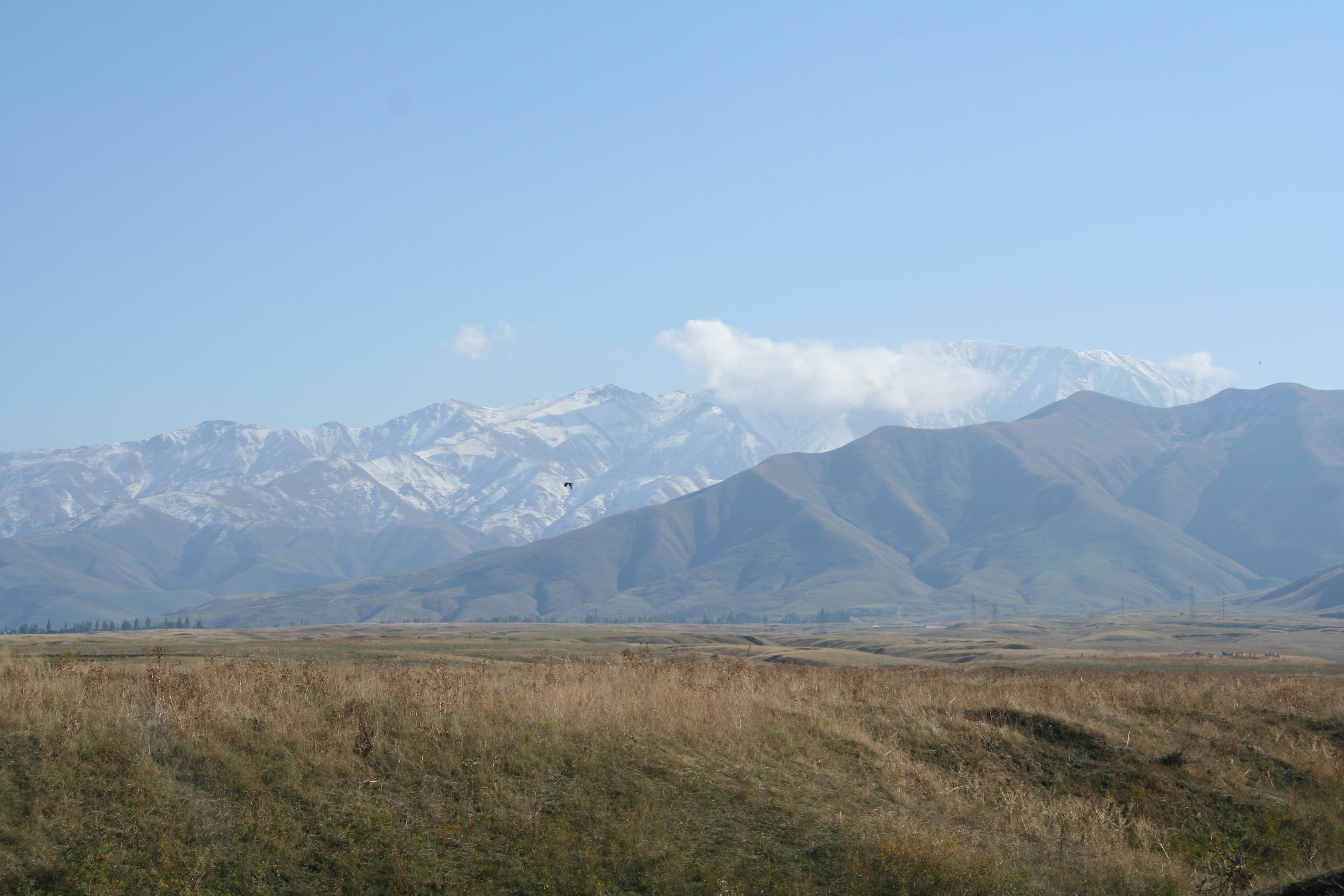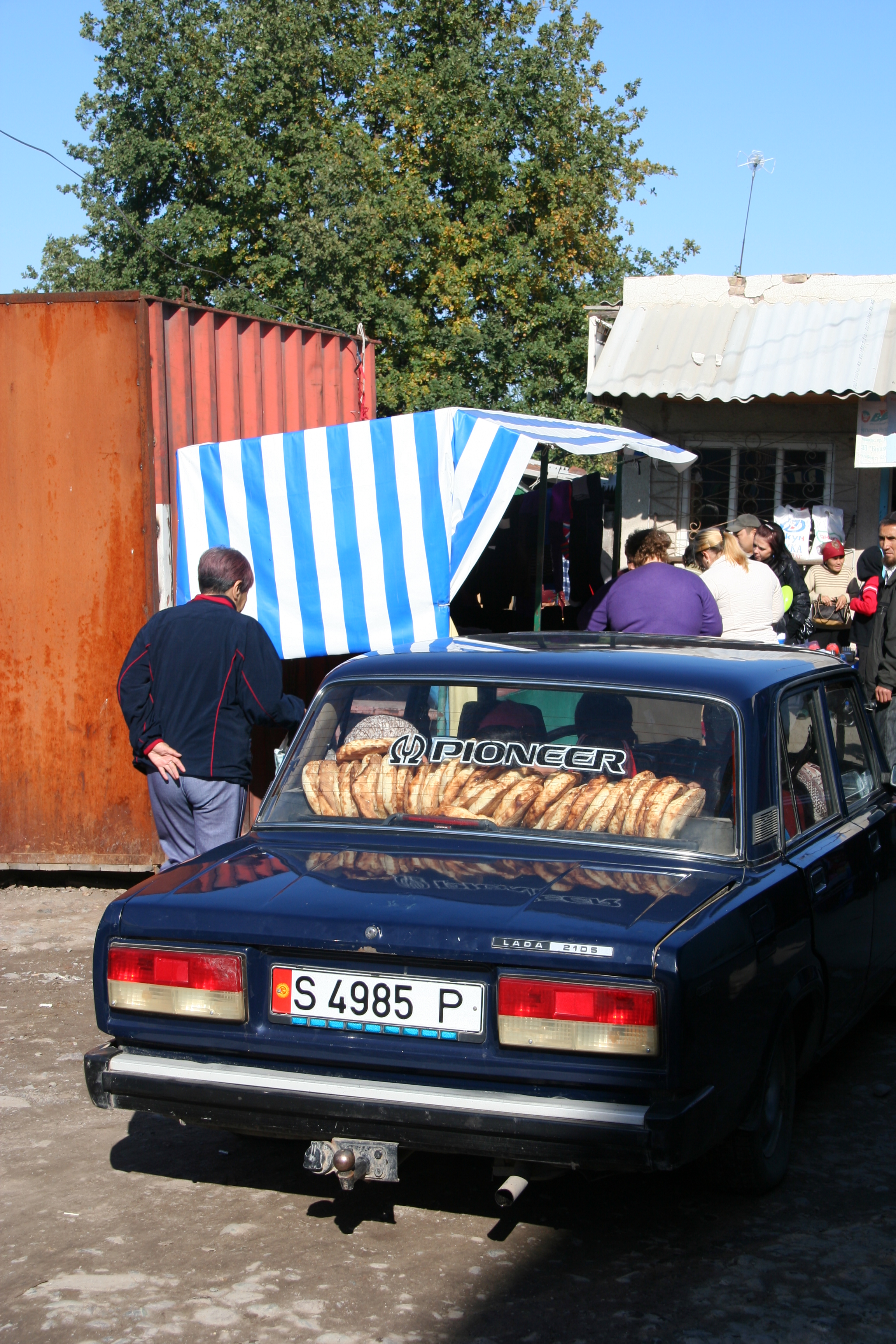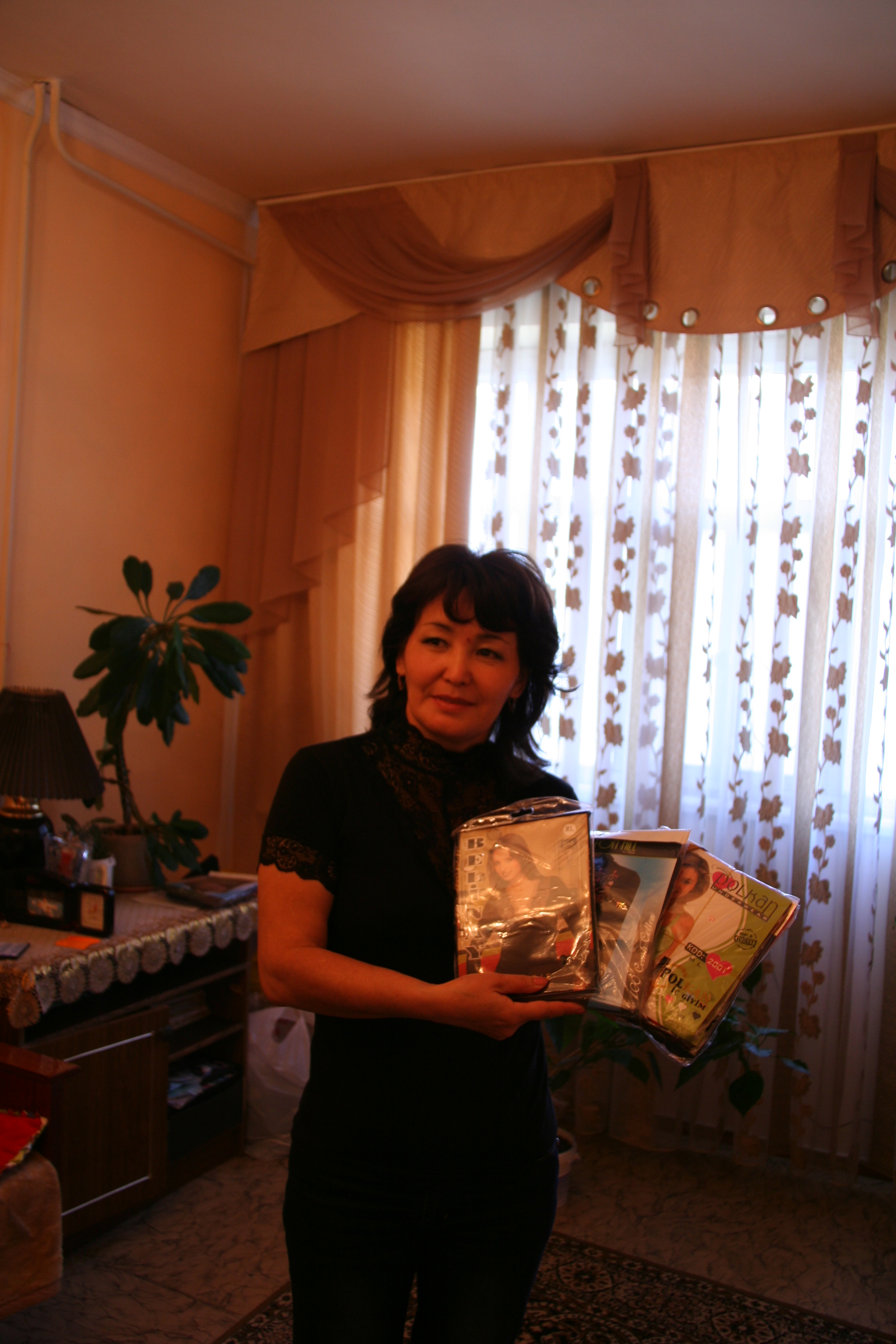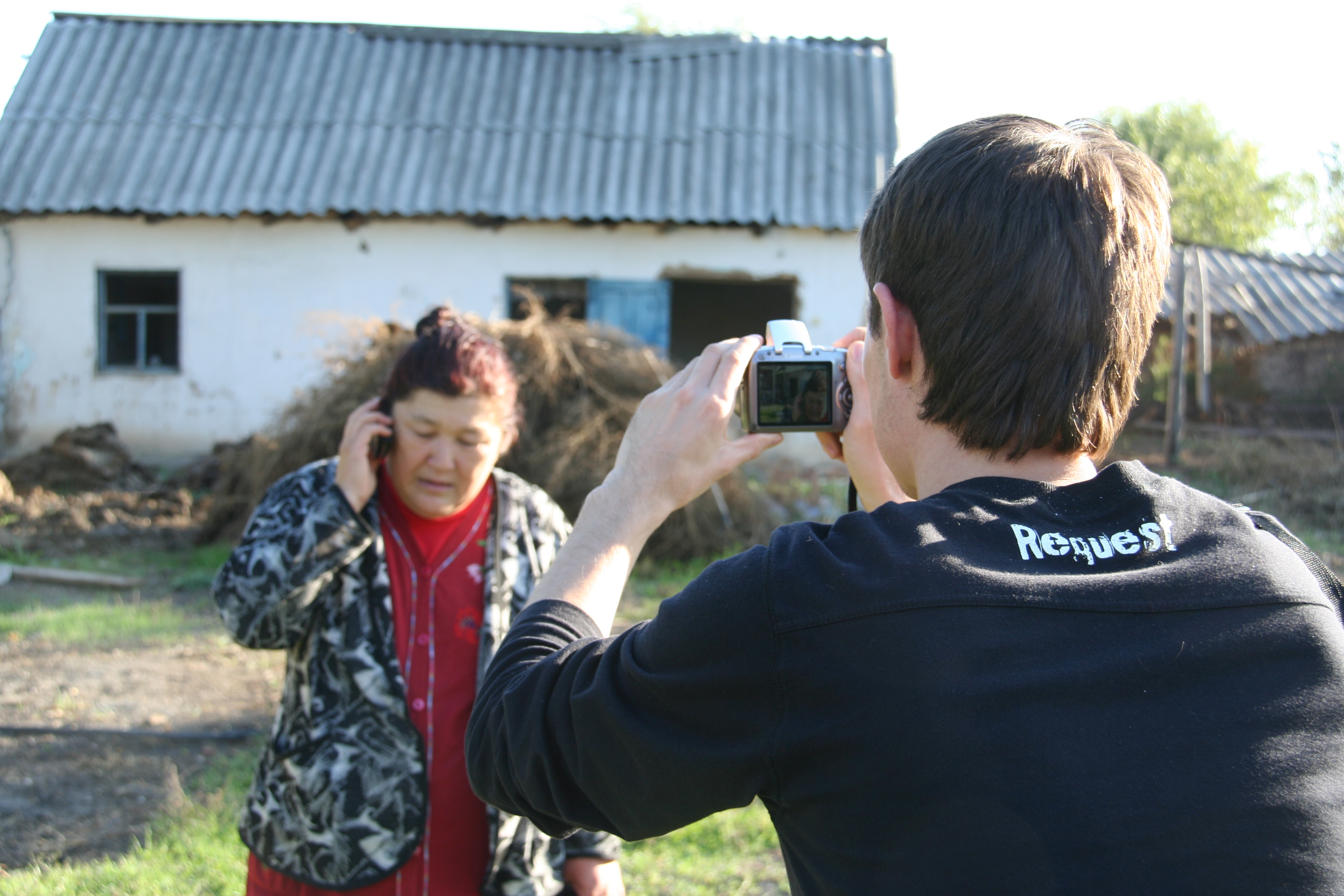
By Rob Packer, KF9 (Kyrgyzstan)
I feel it’s almost become a cliché to write about the inspiring professionalism and overwhelming dedication of MFI staff on these pages. I’ve now been at my Kyrgyz MFI, Mol Bulak Finance, for a week and have now seen where the clichés come from: reality. As if to drive the point home, MBG’s indefatigable Credit Manager, Renat was waiting outside my apartment at 9am on a sunny, but cold October morning to visit borrowers in and around Kara-Balta, Kyrgyzstan.

The view from Bishkek
The road out of Bishkek was my first trip outside of the capital within Kyrgyzstan after my night-time journey from the airport into town. Our route out took us past Osh Bazaar, one of Bishkek’s largest, and Kyrgyzstan’s largest used car market, which is a phenomenon I hope to write about in a later blog. Along our route thousands of kilometres of flat Kazakh Steppe and West Siberian Plain crashed spectacularly into the snow-capped Toblerone blocks of the Alatau Mountains, the advance guard of the Himalayas, which rise 3500 metres within the space of 50 km. Mesmerized by the mountains, by the time I looked back at the road, the second- and third-hand Mercedes of Bishkek had thinned out and we were

Lepyoshki (Kyrgyz loafs of bread) in a Lada
surrounded by a time warp of Soviet Ladas and horse carts. At the same time, silver mosques and deep-blue Orthodox churches began appearing by the side of the road, strangely alongside unremoved statues of Lenin, the Soviet street names: Sovietskaya, Proletarskaya and Lenina, or a strangely named village called Krasny (Red) Metallist. And I thought at one point I saw the street signs still pointing towards Frunze (Bishkek’s Soviet era name). Things came back to earth when we arrived in Kara-Balta’s market and were greeted by Mayrambek, a loan officer from the local branch.
As we started visiting Kiva and Mol Bulak borrowers in the market and filmed their loan updates on the loan and their hopes for the future, I kept thinking “Isn’t this a bit weird?” I’ll give it a bit of perspective: you live in a small town two hours from the big city and have taken out a loan to increase the inventory of your shop, had your photo taken and had it put up on a veb-sayt; and then someone arrives from Chicago, London or Sydney and wants you to describe all of this on camera! The more we spoke with the borrowers about their hopes for the future, the more I became obsessed by another question: Don’t these people deserve a voice? Another Kiva Fellow’s cliché is to say that you are truly inspired by the stories you were told: with no hint of irony, these women really are inspirational.

One of our clients shows us some of the things she bought with her loan.
Their stories are going to be posted as journals on Kiva and I don’t want to repeat what they can say best in their own words. There was the woman who worked as an accountant until things fell apart in the collapse that followed the fall of the Soviet Union and now has a stall in the market. There was the woman who started her own market stall from nothing with the help of a Kiva loan, and who now wants to get her own shop. We saw a woman in a remote village who’s renovating a house to use it as a barn for her cows so she can use the increased milk profits to pay for her daughter to have music lessons. We saw a woman who works long hours at a gas station and spends her two free days a week getting Turkish clothes from Bishkek and selling them in her apartment “because the markets aren’t open if you work late”. Without exception, we met women who want their children to have an education and a start in life. In short, we met eight incredible women.

Getting the right shot
As we left Kara-Balta on our way back to Bishkek, Renat turned to me and asked me if I could now see why microfinance is such a low-margin, high-cost business. It suddenly seemed obvious: in around 10 hours of driving, we’d only managed to see eight borrowers and spent no more than 20 minutes with each one. We’d crossed every part of the narrow strip between the mountains and the Kazakhstan border, even joking at one point that we’d hit the border before we found the borrower, and probably covered 100km of road, pothole and track. The amount of time it takes them to reach some borrowers is incredible, but then again that is one of the roles of microfinance: to help people that banks can’t reach. I’m not sure if anyone’s can ever judge what that makes it worth it; but for me right now, sitting in my apartment in Bishkek, it does, especially if these are the type of people you’re helping to get started in life. And Renat summed them up excellently: Molodtsy nashi klienty! Well done, our clients!
Rob Packer is a Kiva Fellow currently working with Mol Bulak Finance in Bishkek, Kyrgyzstan. Check out and lend to their entrepreneurs on Kiva.org, or join the Kyrgyzstan lending team.
PREVIOUS ARTICLE
Rice, Beans, and an Inspired Hypothesis →NEXT ARTICLE
The place between Russia and China →













